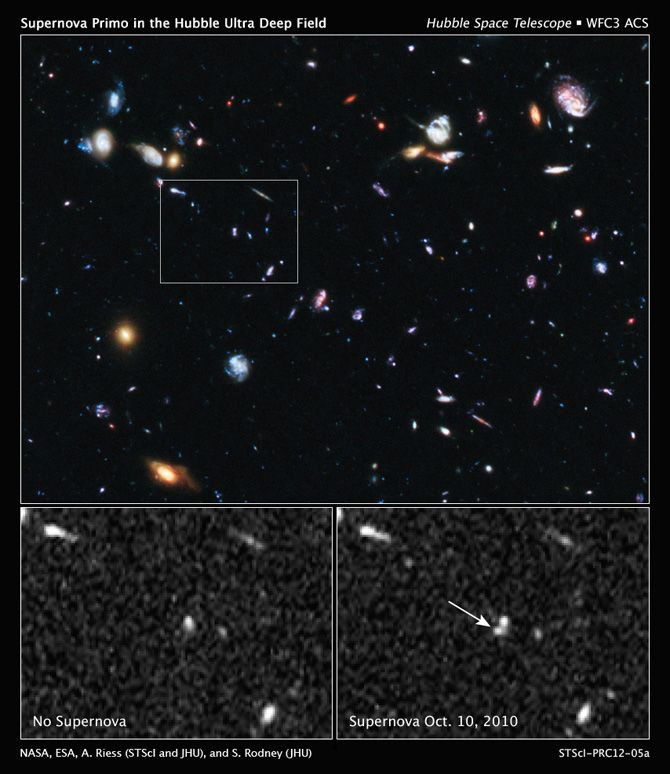9-Billion Year Old Exploding Star Discovered, May Offer Dark Matter Clues

Astronomers using NASA’s Hubble Space Telescope have discovered a distant exploding star deep into the universe after detecting its feeble glow, determining the star exploded more than 9 billion years ago.
Astronomers say that this data will help them understand the nature of dark energy, “the mysterious repulsive force that is causing the universe to fly apart ever faster.”
“For decades, astronomers have harnessed the power of Hubble to unravel the mysteries of the universe," said John Grunsfeld, associate administrator for NASA’s Science Mission Directorate in Washington.
The discovery is "bringing us a step closer to understanding the nature of dark energy which drives the cosmic acceleration." As an astronaut, Grunsfeld visited Hubble three times, performing a total of eight spacewalks to service and upgrade the observatory.
SN Primo, the stellar explosion, belongs to a special class called Type la supernovae explained the authors.
“Type Ia supernovae likely arise when white dwarf stars, the burned-out cores of normal stars, siphon too much material from their companion stars and explode.”
"If we look into the early universe and measure a drop in the number of supernovae, then it could be that it takes a long time to make a Type Ia supernova," said team member Steve Rodney of The Johns Hopkins University.
"Like corn kernels in a pan waiting for the oil to heat up, the stars haven't had enough time at that epoch to evolve to the point of explosion. However, if supernovae form very quickly, like microwave popcorn, then they will be immediately visible, and we'll find many of them, even when the universe was very young. Each supernova is unique, so it's possible that there are multiple ways to make a supernova."
Published by Medicaldaily.com



























